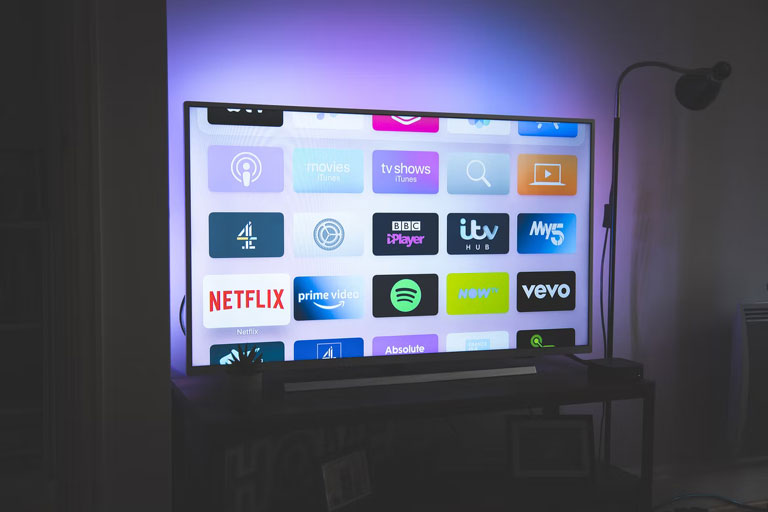
Streaming has become very common in the digital media era. The media that could be accessed only through a TV at an earlier time is now available on many platforms.
IPTV is a standard streaming service, and it has access to a lot of content exclusive to Netflix. IPTV is an abbreviation of Internet Protocol Television.
We will be looking at what an IPTV service is, how it functions, and its various types and benefits. Stay hooked to the article to know more!
What is IPTV?
There is specific content that you can access only through the internet. For instance, YouTube. Some content is exclusive to YouTube only. This isn’t how an IPTV format works. Instead, the content that is delivered to the Internet Protocol Networks is IPTV.
The IPTV renders you with the content that is available on your traditional TV, smartphone, tablet, and even your PC. However, it’s available via a media format. These streaming media formats include Sling TV, Spectrum TV Streaming, Google TV, and movies. What’s great about these services is that they are easy to access. In fact, you can install Sling TV on Firestick in just a couple of steps.
The IPTV is simply a medium for communicating video programs and television content to the viewers with the help of the internet. The scope of IPTV is more remarkable than traditional broadcasting, and it has been implemented in subscriber-based telecommunication networks also.
The only difference is that users cannot stream content on their traditional cable televisions continuously. But, when it comes to IPTV, the users can stream continuously.
If you own a Firestick, there are some ways to incorporate IPTV into it. For instance, you can try out the sideloading IPTV Smarters app that will allow you to stream channels from multiple IPTV subscriptions.
Types of IPTV Services
Many types of IPTV Services are based on an individual’s needs and are easily available in the market. Some of the most popular ones are mentioned below.
-
VOD or Video on Demand
Many OTT platforms like Netflix and Amazon Prime have already made it to the mainstream media formats. These platforms are feasible and charge an individual for a monthly or a yearly subscription, based on what is the need.
It gives the individuals access to all kinds of content that is available on that media platform after charging them with a subscription amount.
The IPTV VOD works in a similar manner. The video systems of the IPTV are facilitated with video and audio file compressions. These compressions are carried with Internet Protocol Multimedia Transmission. Usually, video files are transferred via the HLS streaming protocol.
These video files are streamed cohesively on a real-time basis. These video files are exclusive to IPTV services.
-
TV on Demand
TV on Demand is almost similar to Video on Demand because this feature too allows you to stream your favorite content anywhere.
However, TV on Demand is limited only to the movies and TV shows that are broadcasted on the television. The cost of this service is decided per show or movie.
However, TV on Demand is an excellent option for viewers who wish to stream their desired content at their preferred time.
-
Near Video on Demand
The unique feature of the Near Video on Demand service is that the entertaining media on this platform has a fixed schedule, and new content is released only when the program finishes.
This model is generally used for the pay-per-view service. This way, the servers are charging the users for every content.
The services of NVOD are employed by both cable operators and satellite service providers.
This is a common technique used to render users with the same type of content at different and staggered start times.
-
Live Broadcast
Live broadcast content is very similar to the live content on your laptops and televisions, like the live award shows, sports matches, etc.
The only difference between the two services is their presentation. Here, the content is broadcasted with the help of the internet instead of a cable.
With the help of video conferences and live product launches, one can earn from their potential video content. Later, they can even position their brand on social media.
-
Time-shifted TV
This type of IPTV service enables an individual to access the content that they have missed on their television. This service helps in binge-watching.
Benefits of IPTV Services
IPTV is a system through which television is delivered to you via the internet protocol instead of cable. Netflix is an example of an IPTV service.
IPTV services have the edge over traditional televisions in many ways. There are a lot of benefits of the same.
Traditional televisions serve their users with as much content as possible with the help of a network of cables.
But, in an IPTV system, the content comes up only when the host asks for it. This shows that it is necessary to have a strong host network.
While using an IPTV service, users can watch their desired content while it is being downloaded. This means that on an IPTV, content is streamed.
Final Thoughts
IPTV is a service that is rendered to the user through an Internet Protocol. It is similar to a traditional television but has the edge over it.
Furthermore, IPTV services have been categorized differently based on the suitability and needs of the users. We hope that this article has helped you.
